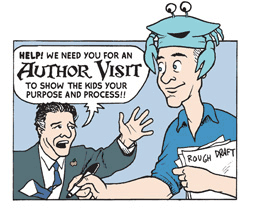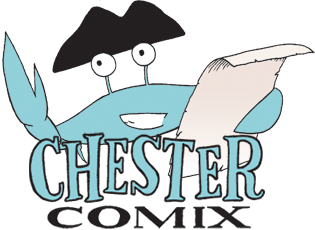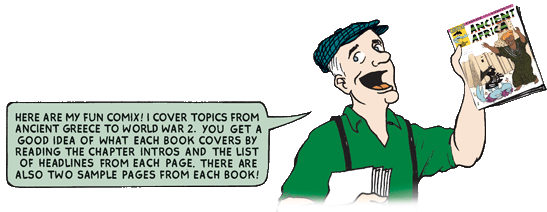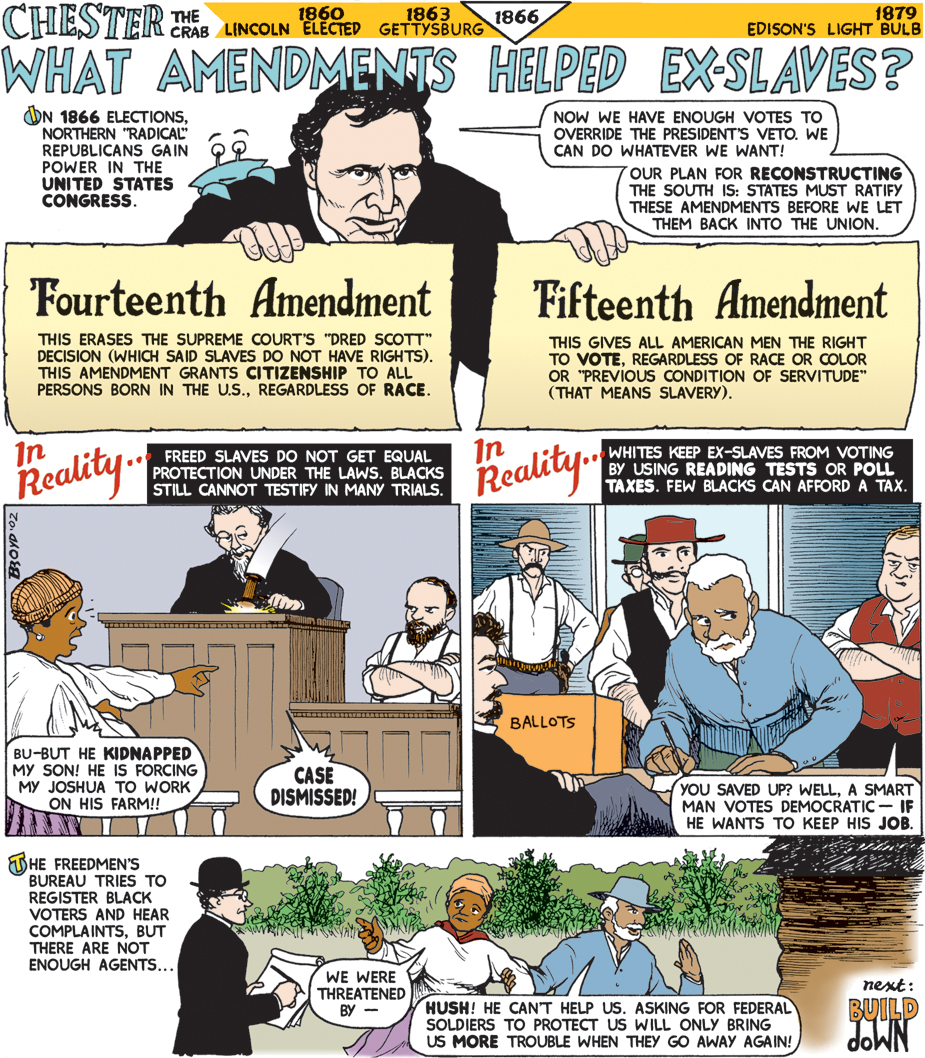












|
|

|
 |
||
 |
"I have twin 8-year-old sons who will love your comics. I was very excited to hear about them from a friend of mine." Anne, mother from Annapolis, MD |
|
|
|
||
Reconstruction Junction
The end of the American Civil War is not the end of the conflict between Northern states and Southern states. The battlefield shooting is over, but the political arguments over civil rights go on – sometimes with new violence between whites and black citizens. It is a confusing and dark time as Americans try to put their broken nation back together. The lessons learned – and missed — in the Reconstruction Era will affect American history for another 100 years. This colorful graphic novel will excite reluctant readers, prepare students for standardized tests in history and help homeschooling parents!
Comic sample page #1: What amendments helped ex-slaves?
Comic sample page #2: How did Carver make inventions?
Topics covered in this comic book
View a teacher’s guide for this comic
CHAPTER 1 RECONSTRUCTION
The Civil War destroys many families, farms, and ideas. Now that the war is over, what kind of country will the former enemies in the North and South rebuild? Will they work together or try to build two separate nations under one flag? It is time to reconstruct buildings, government, and the ways people treat each other. The choices made in this Reconstruction Era will steer the United States for decades to come . . .
Reconstruction answers the following topics:
When was America’s “Reconstruction?”
What was “The Freedmen’s Bureau?”
How free were the freed men?
What amendments helped ex-slaves?
How does Reconstruction end?
CHAPTER 2 THE KKK CRISIS
A problem with the struggle to rebuild the United States as one nation is the anger that many former Confederate soldiers feel towards this new society. The Republican governments that take over the South ask black and white people to live equally, but many white Southerners cannot change the attitudes they had before and during the war. An underground group called the Ku Klux Klan begins to pull together wartime guerrilla fighters, bored young men, displaced Democratic politicians, angry poor white farmers, workmen scared of black competition . . .
The KKK Crisis answers the following topics:
How did the Ku Klux Klan start?
How did the Ku Klux Klan dress?
How did the Ku Klux Klan operate?
What did U.S. Grant do about the KKK?
What did the Klan do after 1875?
CHAPTER 3 GEORGE WASHINGTON CARVER
George Washington Carver is one of the success stories of the Reconstruction Era. He is born a slave but becomes one of the first black people to attend an American college and makes a name for himself as a scientist and educator. The farms of the South have become too dependent on cotton, which ruins the soil after several years. Carver teaches poor farmers to grow other crops, such as peanuts and sweet potatoes, as a source of their own food and of cash. His life shows that black people can solve problems for themselves!
George Washington Carver answers the following topics:
Was George Washington Carver born a slave?
Did the South get reconstructed?
What did a sharecropper do?
How did Carver make inventions?
Why was Carver the “Peanut Wizard?”
CHAPTER 4 RAILROAD RECOVERY
The business that does the most to tie the North and South back together is the railroads. Northern businessmen have the money to pay for new railroad tracks across the nation, and for many poor Southern towns a rail line is the difference between survival and disappearance. This improvement in transportation also boosts some industries in the South because they can get their products to faraway markets faster on trains!
Railroad Recovery answers the following topics:
How did railroading coal help the South?
Who paid for the new railroads?
How did railroads help farming?
Where were cigarettes big business?
Where did railroads carry textiles?




